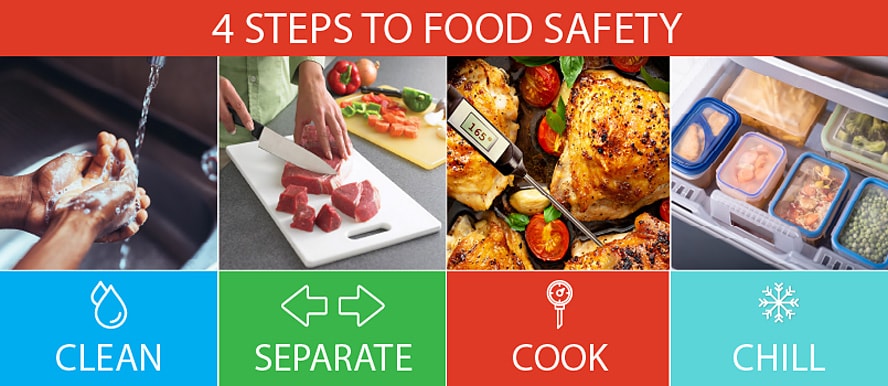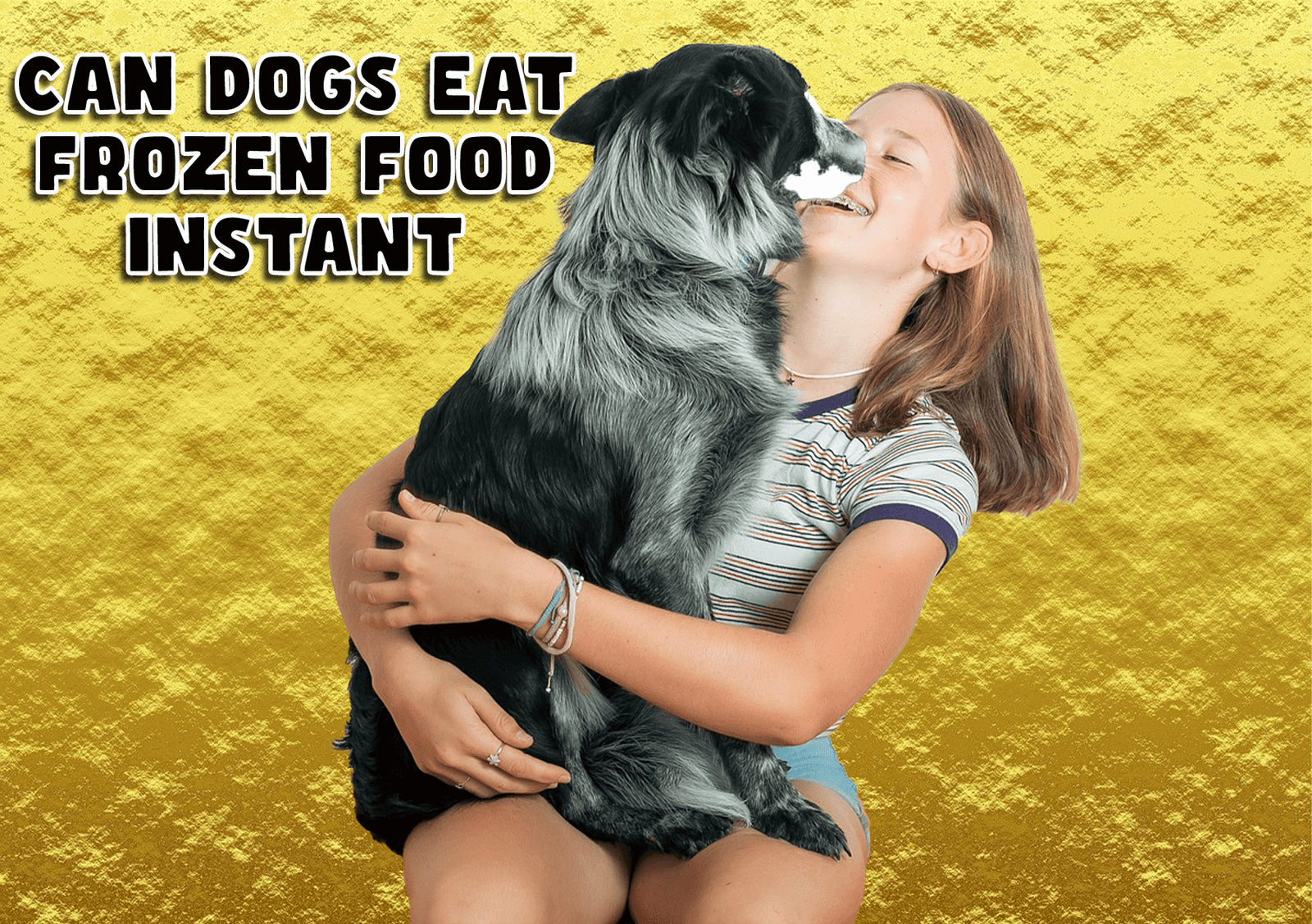Can Dogs Eat Frozen Food if it’s safe and intended for canine consumption? It’s crucial to ensure that frozen food is free from harmful additives.
Frozen dog food can be a refreshing treat, especially in warmer months or for teething puppies. Many pet owners are keen on giving their dogs frozen food, ranging from specially formulated kibble to raw diets designed for freezing. It’s important to remember that not all frozen human foods are suitable for dogs, as some contain ingredients that may be toxic to them.
Before incorporating frozen foods into your pet’s diet, consult a veterinarian to ensure your dog’s nutritional needs are met. Store-bought frozen dog treats are often safer than homemade ones unless you’re well-versed in canine nutrition. Always defrost frozen raw food properly to prevent bacterial growth and avoid potential health risks to your dog.
Credit: www.outsideonline.com

The Appeal Of Frozen Foods For Canine Diets
Decoding Frozen Foods For Dogs
Welcome to the world of pet nutrition, where frozen foods for dogs open up a treasure chest of benefits. But what’s behind the frosty facade? Let’s unveil the truth about frozen delights for your furry friend.
Types Of Frozen Dog Foods Available
Frozen food isn’t just for humans. Dogs have a variety to choose from:
- Raw frozen diets – These mimic a dog’s natural ancestral menu.
- Frozen-cooked meals – They provide convenience plus homemade quality.
- Frozen treats – Perfect for hot days or as a special reward.
Choose the best option that fits your dog’s dietary requirements and your lifestyle.
Nutritional Value In The Cold
Freezing can lock in essential nutrients for peak health:
| Nutrient | Benefit |
|---|---|
| Proteins & Fats | Provide energy and support growth. |
| Vitamins | Boost the immune system. |
| Minerals | Ensure healthy bones and teeth. |
Not all frozen foods are equal. Some may have more fillers than nutrition. Reading labels and understanding what goes into your dog’s bowl is crucial.
The appeal of frozen foods for canine diets stretches beyond simple trends. Many dog owners discover that frozen food options pave the way for a balanced and nutritious diet for their furry friends. Loaded with natural ingredients and kept fresh by freezing, these meals are gaining traction among pet parents who value health and convenience.
Convenience Meets Pet Nutrition
When feeding our canine companions, we all seek a balance between nutritious choices and convenient solutions. Frozen dog food embraces this balance fully, offering a long shelf life and easy preparation. With one quick trip to the store, pet owners can stock up on meals ready to serve after a superficial defrost.

- Time-saving: No need for daily meal prep.
- Less waste: Give your dog the exact portion they need.
- Preserved nutrients: Freezing locks in the freshness.
- Variety: Diverse options keep dogs excited for mealtime.
Trends In Frozen Dog Food Popularity
As dog owners become more aware of frozen food’s benefits, its popularity skyrockets. The demand for high-quality, minimally processed food that can improve pets’ health is apparent. A glance at recent trends shows increased sales and broader availability in pet stores and supermarkets alike.
| Year | Sales Growth | New Brand Entrants |
|---|---|---|
| 2020 | 20% | 10 |
| 2021 | 35% | 15 |
| 2022 | 50% | 25 |
With impressive growth statistics, frozen foods are becoming a staple in the dog diet. Social media buzz and endorsements from veterinarians further fuel this explosive trend.
Pros And Cons Of Feeding Frozen Foods To Dogs

Dog owners often ponder over the proper diet for their furry friends. Frozen foods offer a convenient option, but weighing the benefits and downsides is essential. Let’s delve into the pros and cons of
Benefits: Nutrients Intact And Less Processing
Frozen foods can be packed with essential nutrients for your dog. Freezing preserves vitamins and minerals, often lost in other forms of food processing.
- Fresh taste remains
- Minimal preservatives
- High-quality ingredients are often used
These meals undergo less processing compared to kibble or canned foods. This means they can retain more of their original nutritional profile, which benefits a dog’s health.
Drawbacks: Potential Health Risks And Allergies
However, there are risks to consider. Foods that are frozen are not all made equal.
- Possible contamination with bacteria such as Salmonella
- This could lead to gastrointestinal upset if not handled properly
Allergies need attention as well. Some frozen foods may include ingredients that trigger allergic reactions in particular dogs. Always check the label and consult with a vet if uncertain.
Remember, a safe transition is crucial when introducing new foods to your dog’s diet. The gradual introduction helps prevent stomach issues.

Credit: www.cdc.gov
Safety Measures For Serving Frozen Food To Fido
Safety measures are crucial when serving frozen food to your dog. Ensuring that Fido enjoys a tasty, safe meal doesn’t have to be a challenge. Frozen foods can be a nutritious part of your dog’s diet with the correct steps. Let’s dive into how you can serve frozen goodies without risking Fido’s health.
Proper Thawing Techniques
Thawing frozen food is a step you can’t skip for your pet’s safety. It’s vital to avoid the ‘danger zone’ where bacteria rapidly multiply, between 40°F and 140°F. Here’s how to thaw food correctly:
- Refrigerate items overnight, letting them thaw slowly and safely.
- Use cold water to quicken thawing, changing the water every 30 minutes.
- Please avoid using the microwave to thaw pet foods, as it can partially cook them, leading to uneven temperatures.
Avoiding Contamination And Bacteria
Keeping Fido’s food free from bacteria isn’t hard with these tips:
- Wash your hands before and after handling your dog’s food.
- Clean all surfaces and dishes that come into contact with the frozen food.
- Never put food back into the freezer after it has fully thawed.
- Discard any leftovers that have been sitting out for over two hours.
Fresh is best but frozen can work wonders if handled carefully!
Balancing A Dog’s Diet With Frozen Food
Many pet owners ponder over the best way to feed their furry friends. Frozen food can be a nutritious addition to your dog’s diet. It’s essential to strike a perfect balance for optimal health. Let’s explore how to mix frozen foods with a dog’s diet and measure the correct portions.
Incorporating Frozen Foods With Other Dietary Elements
Dogs need a well-balanced diet rich in lipids, proteins, carbs, and minerals.
Frozen foods, rich in nutrients, can complement regular kibble or canned food. Here’s how to mix them:
- Defrost properly: Ensure the frozen food is thawed safely to maintain nutrition.
- Combine with kibble: Mix frozen vegetables or meats with dry dog food.
- Offer as a treat: Use frozen fruits like blueberries as a healthy snack.
- Control variety: Introduce new frozen items slowly to avoid stomach upset.
Determining The Right Portion Sizes
Correct portion sizes are crucial for a dog’s health. Too much food leads to weight gain; too little can cause deficiencies. Use these tips to get it right:
- Consult your vet: Get professional advice on your dog’s nutritional needs.
- Read the labels: Check frozen food packages for portion recommendations.
- Adjust portions to your dog’s size, age, and activity level.
- Use measuring cups for accuracy.
| Dog Size | Frozen Food (Cups) | Kibble (Cups) |
|---|---|---|
| Small | 1/4 – 1/2 | 1/2 – 1 |
| Medium | 1/2 – 3/4 | 1 – 2 |
| Large | 3/4 – 1 | 2 – 3 |
Observe your dog’s reaction to the diet change and adjust portions as needed.
Can Dogs Eat Frozen Food Diet, when transitioning
Frozen food diets can be a healthy option for dogs. They often contain fresh ingredients and minimal preservatives. Transitioning your dog to a frozen food diet requires patience and attention to detail. With the right approach, your furry friend will enjoy the benefits of a nutritious and tasteful diet.
Step-by-step Introduction
- Start slowly: Introduce frozen food gradually by mixing it with their current food.
- Adjust portions: Initially, ensure the mix has more of their old food.
- Increase frozen food incrementally: Over several days, increase the frozen food amount.
- Watch for changes: Monitor your dog’s appetite and stool quality.
- Be consistent: Serve the meals at the same time each day.
Monitoring Your Dog’s Reaction To New Foods
Observe closely as your dog tries frozen food. Look for signs of digestive upset, like vomiting or diarrhea. Check for changes in energy levels and coat condition. Use the following checklist:
- Stool quality: Is it regular or looser?
- Behavior: Any change in their habits?
- Allergies: Any new signs of itching or discomfort?
| Aspect | What to Look For |
|---|---|
| Appetite | Is your dog excited to eat? |
| Digestion | Any discomfort after eating? |
| Energy | Is your dog as active as usual? |
Expert Opinions On Frozen Diets For Dogs
Real-life Tales: Owners Share Their Experiences
Dogs and frozen food are an adventure for some and a challenge for others. This section dives into real accounts of dog owners. They share how frozen diets impacted their furry friends’ health. Prepare to be amazed and learn from their experiences.
Success Stories Of Health Improvements
Dog owners are often looking for the best diet for their pets.
Frozen food has changed the game for many.
- Samantha’s Story: Her Beagle, Max, had constant digestion issues. Dry kibble never worked well. Samantha switched to frozen meals. Max’s tummy troubles vanished in weeks. His energy levels soared.
- Mike’s Tale: Bella, his senior Labrador, struggled with her weight. Traditional food was too calorie-dense. Frozen veggies and lean meats became her diet. Bella shed those extra pounds. Her joints thanked her.
Challenges And How To Overcome Them
Every rose has thorns, and the frozen food path isn’t smooth.
Storage and prep can be tricky. Yet, owners push through.
| Challenge | Solution |
|---|---|
| Storing Bulk Buys | Dedicated freezer space helps. Rotate stock to keep it fresh. |
| Defrosting | Consistent mealtime schedules ensure food is thawed safely. |
| Nutrition Balance | Consult a vet for a balanced diet plan. Add supplements if needed. |
Persistence is key. Dogs can thrive on frozen diets with the right approach.
Dog owners often wonder about the safety and benefits of frozen diets. Experts have examined whether these chilly options make for a healthy doggie dinner. From veterinary insights to nutritionists’ tips, a deep dive into the world of canine frozen fare unveils the dos and don’ts.
Can dogs eat frozen food?
Yes, dogs can eat certain types of frozen food raw, but it’s crucial to choose safe options and take necessary precautions. Raw frozen foods like meats, fish, and poultry can be suitable for dogs, provided they are high quality and free from additives or contaminants. However, handling raw frozen food properly is essential to minimize the risk of foodborne illnesses in both dogs and humans.
Thoroughly defrost raw frozen food in the refrigerator before serving it to your dog, and avoid refreezing previously thawed food to maintain its freshness and safety. Also, consult your veterinarian before introducing raw frozen food into your dog’s diet, especially if they have pre-existing health conditions or dietary sensitivities.
By exercising caution and selecting appropriate options, you can offer raw frozen food to your dog as a nutritious and enjoyable part of their diet.
Veterinarian Insights On Frozen Foods
Veterinarians examine the pros and cons of frozen diets for dogs. Their guidance is clear:
- Check the ingredients. Ensure meat sources are safe and free from harmful bacteria.
- Avoid bones. Frozen or not, they can splinter and cause injury.
- Ensure proper storage. Incorrect storage can lead to spoiled food and health risks.
Some vets give frozen foods the green light, especially those designed with a dog’s dietary needs in mind.
Nutritionist Advice On Maintaining A Balanced Diet
Dog nutritionists stress balance. Here’s their advice:
- Include variety. A mix of proteins, vegetables, and grains promotes health.
- Check for completeness. The diet should meet all nutritional needs.
- Consider the dog’s life stage. Puppies need different nutrients than seniors.
A well-chosen frozen diet can be part of this balance. But always ensure it complements other food your dog eats.
Making An Informed Decision On Canine Frozen Food
Making an informed decision on canine frozen food requires consideration of your pet’s unique dietary needs. Frozen dog food can offer convenience and nutritional benefits, but understanding what works best for your furry companion is vital. Pets have distinct health requirements and tastes, much like humans. Opting for frozen meals can be a wise choice. Yet, thorough examination and knowledge are crucial in choosing the right products.
Assessing Your Dog’s Individual Needs
Every dog is different. Individual dietary needs vary greatly depending on breed, age, activity level, and health conditions. Before switching to frozen food, it’s vital to understand your dog’s specific nutritional requirements.
- Puppy, adult, or senior? Life stage determines calorie and nutrient needs.
- Breed size influences portion sizes and nutritional concentrations.
- Activity levels dictate energy intake from food.
- Health issues may require special diets formulated for medical concerns.
Consulting a vet ensures your dog gets optimal nutrition from frozen meals.
The Role Of Ongoing Research And Reviews
Current research and product reviews are invaluable when selecting a frozen food brand for your pet. Continual advancements in canine nutrition illuminate the best practices for feeding our dogs.
Check updated studies to learn about frozen diets’ benefits and potential drawbacks. Authentic customer reviews offer insights into the experiences of other dog owners with various brands.
| Research/Reviews Consideration | Reason to Consider |
|---|---|
| Nutritional Completeness | Ensures a balanced intake of vitamins and minerals |
| Digestibility | Reflects how easily a dog can process the food |
| Allergen Information | Identifies if the product is safe for dogs with allergies |
Rely on credible sources for research and check trusted platforms for reviews.
Frequently Asked Questions Of Can Dogs Eat Frozen Food
Is It Safe For Dogs To Eat Frozen Food?
Dogs can safely eat some frozen food but always consult a vet first. Avoid offering frozen foods with bones, high-fat content, or any toxic ingredients to dogs. Always thaw food to prevent choking and digestive issues.
Do You Need To Defrost Frozen Dog Food?
Yes, defrosting frozen dog food is necessary. Thaw it in the refrigerator or microwave, following the product’s specific instructions for safe feeding.
Is It Bad If Dog Food Freezes?
Freezing dog food is generally safe but can alter texture and taste. Always thaw properly before serving to your pet.
Is Frozen Raw Food Safe For Dogs?
Frozen raw food can be safe for dogs if handled correctly. Ensure it’s species-appropriate, free from harmful bacteria, and follow safe thawing practices. Always consult a veterinarian for personalized advice on your dog’s diet.
Conclusion
Feeding dogs frozen food can provide hydration and a fun treat. Always ensure it’s safe and age-appropriate for your pet. Forget old myths—freshness can come from the freezer! Dive into variety, monitor your dog’s health, and remember that moderation is vital.
Bon appétit, pups!

I’m a Canada, UAE, US, and UK-based writer and dog expert blogger. I spent over five years learning about dog food and grooming techniques. Additionally, I recommend avoiding and properly treating various physical problems in dogs. I am here to share my knowledge about good dog nutrition and care.

